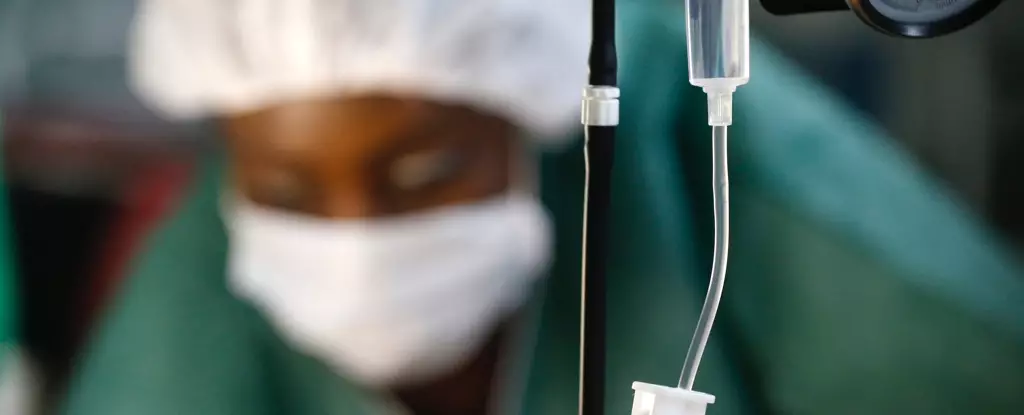Recently, the southwestern region of the Democratic Republic of Congo (DRC) was thrust into the spotlight due to an alarming outbreak of an unidentified disease that has reportedly led to the deaths of between 67 and 143 individuals over the span of two weeks. Characterized by flu-like manifestations—fever, headaches, coughs, and anemia—the disease has predominantly affected vulnerable populations, particularly women and children. Vital health officials are racing against time to investigate the outbreak’s origins and to identify the pathogen responsible for this tragic situation. However, complexities abound in pinpointing the cause, casting a shadow on the pursuit of solutions.
This outbreak not only raises immediate health concerns but also highlights systemic issues in healthcare infrastructure within the DRC. The efforts to identify whether the conditions stem from endemic diseases like malaria, dengue, or Chikungunya are hampered by existing limitations in diagnostic capabilities. The lack of access to comprehensive testing facilities leaves several diagnostic possibilities unexplored. For many low-income regions, including the DRC, clinical laboratories often focus on common diseases, which diminishes the chance of detecting less prevalent pathogens.
Facing significant hurdles, health officials also grapple with logistical challenges that arise when attempting to assess the extent of the outbreak. Sample collection and transport to well-equipped laboratories present additional issues, particularly when it may be necessary to send samples abroad for analysis. This raises ethical quandaries surrounding international sharing of biological samples, particularly since the equitable distribution of benefits derived from such practices is often disputed.
In assessing the true scale of the outbreak, limitations in healthcare access become evident. The DRC, for instance, has a staggering shortage of medical professionals, with fewer than two doctors per 10,000 individuals, in stark contrast to countries like the UK, which boasts over 31 doctors per 10,000 population. This physician scarcity exacerbates the challenge of diagnosing infections, as not all patients seek care, and many may remain undetected in remote areas with insufficient healthcare infrastructure. The delay from infection to diagnosis and reporting results in a systemic lag that complicates effective outbreak management.
Compounding these local challenges is the reality of emerging infectious diseases globally. Factors such as climate change, urbanization, and the encroachment of humans into wildlife territories contribute to the increased incidence of zoonotic diseases—those spillover infections which transition from animals to humans. The inability of the current global health surveillance system to effectively detect and respond to these threats emphasizes an urgent need for reform.
The necessity for a robust and effective disease surveillance mechanism is imperative. Unfortunately, the fragmented nature of global health services leaves many regions—particularly those in resource-poor settings—vulnerable to both unrecognized outbreaks and delayed responses. Inadequate funding, poorly trained personnel, and a lack of standardized reporting protocols can result in catastrophic consequences, wherein diseases could spiral out of control before being recognized.
In response to gaps in infectious disease preparedness and response, the World Health Organization (WHO) has initiated programs like the 7-1-7 initiative, which aims to improve the timeline for the detection and reporting of outbreaks. The ambitious goals of this initiative are commendable, yet they may still fall short in real-time application, particularly when faced with rapid disease propagation.
Another WHO-led endeavor is the Integrated Disease Surveillance and Response (IDSR), which has been implemented in various African nations over the past two decades. While this initiative has seen mixed success, there is hope that future strategies will leverage technology and inter-agency cooperation to streamline disease reporting and response.
Global collaboration has also prompted the formation of networks such as the International Pathogen Surveillance Network focused on enhancing pandemic preparedness by integrating data across multiple sectors, from human to environmental health. As efforts to harmonize and strengthen existing surveillance systems gain traction, the potential exists for improved detection and management of emerging infectious diseases.
The recent outbreak in the DRC underscores a critical need for improved public health surveillance systems, better access to healthcare, and comprehensive training for healthcare providers. The onset of new diseases should serve as a wake-up call to global health authorities, urging a reevaluation of existing frameworks and practices.
In the wake of this emerging crisis, it is crucial for the international community to recognize the interconnectedness of global health. Strengthening health systems in vulnerable regions is not merely a local issue but a global responsibility that could very well prevent the next pandemic. Without concerted efforts to enhance disease detection and response mechanisms worldwide, humankind risks facing overwhelming outbreaks with devastating consequences, echoing the haunting lessons of past pandemics.

